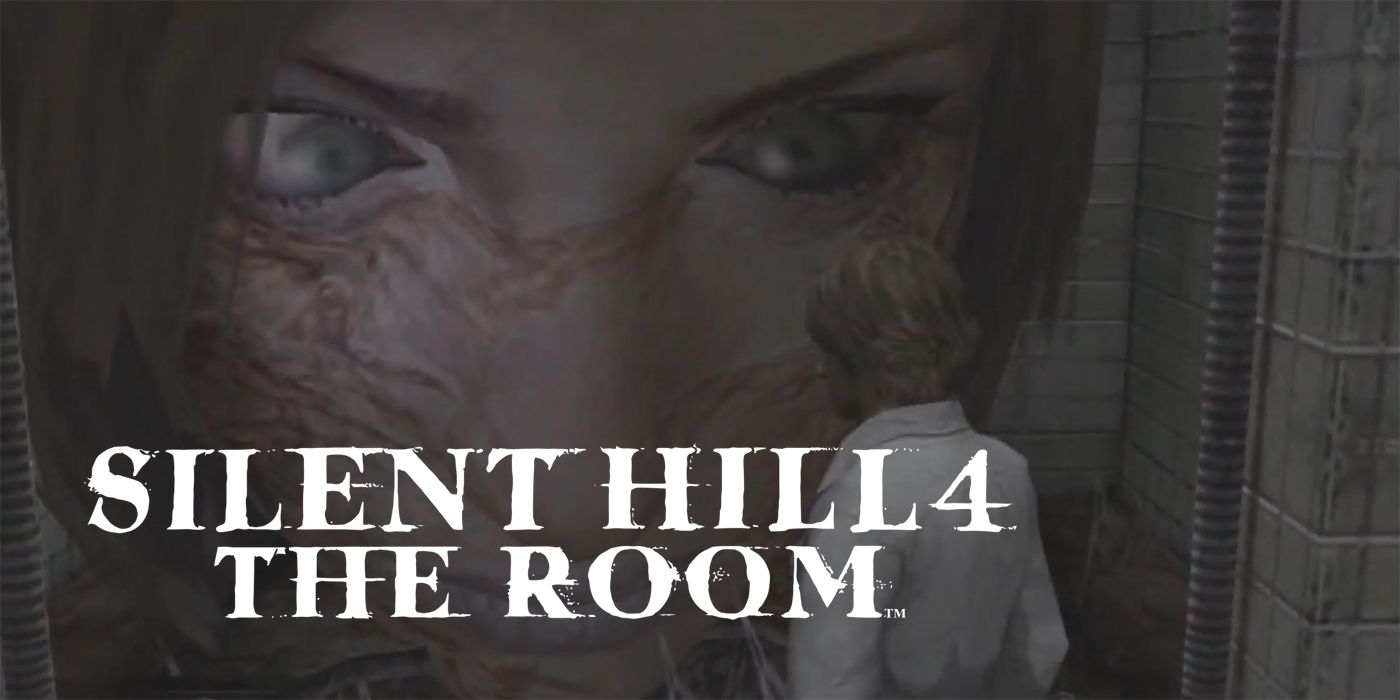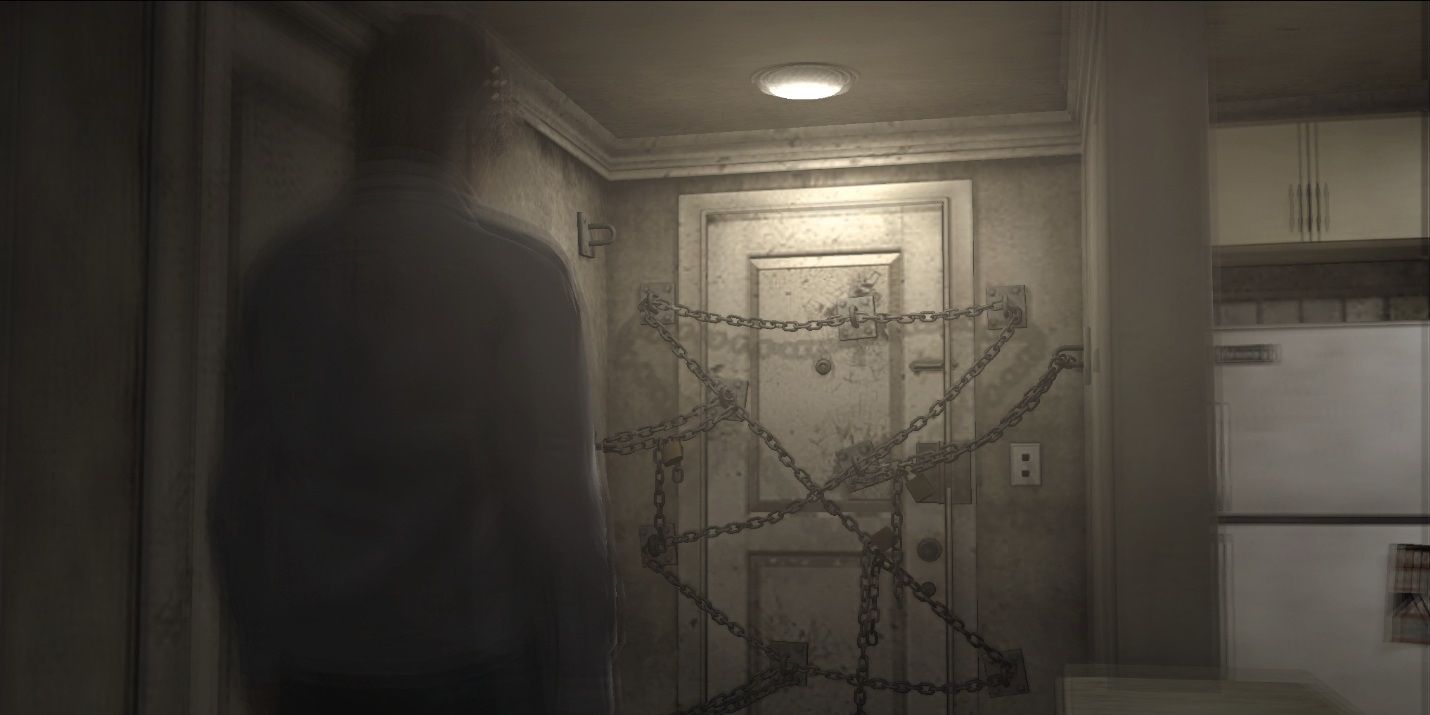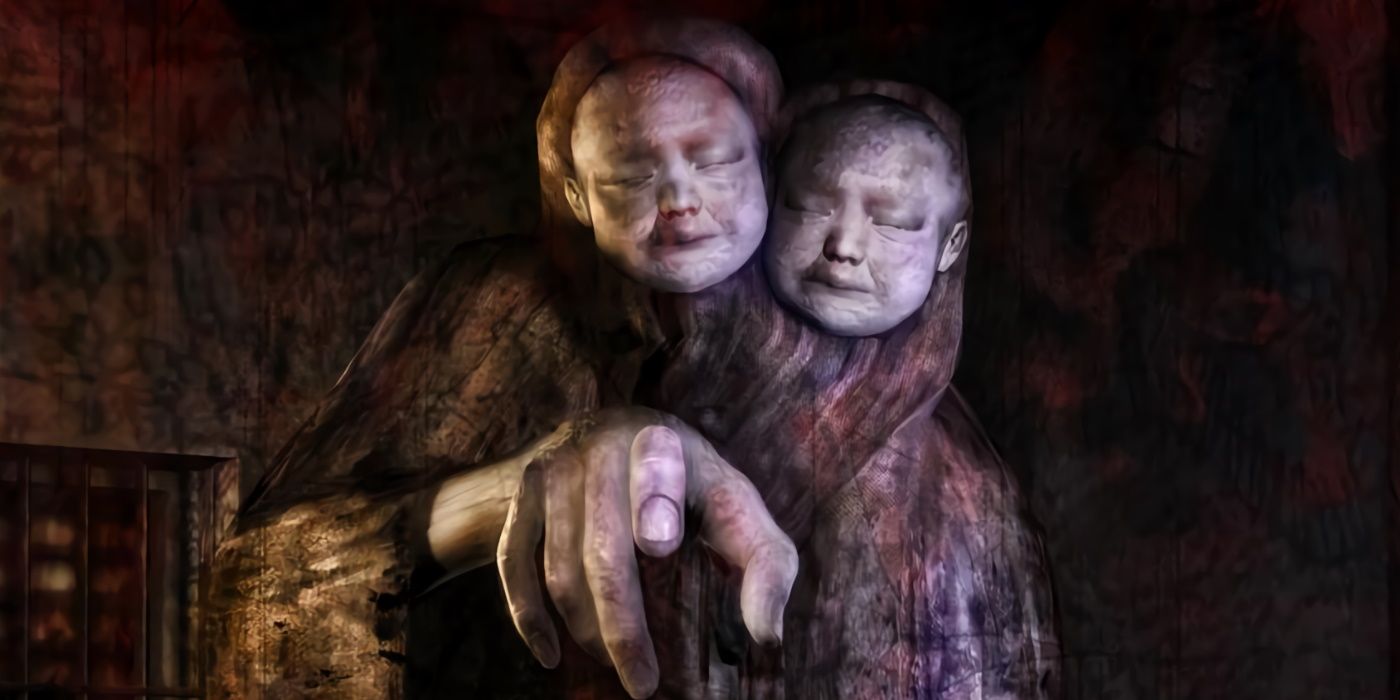In 2014, a playable teaser for a now-canceled Silent Hill game, known at P.T. went live on the PlayStation Network. Since then it has made gaming history as one of the scariest games to play ever, and influenced a slew of horror games released after it. While continuing to lament what a Hideo Kojima and Guillermo Del Tero horror game could have been, it's worth revisiting the Silent Hill series to gain insight into how influential and innovative these games have always been. One entry in the series stands out in particular, Silent Hill 4: The Room; this game successfully utilizes some of the most frightening aspects of the series while creating a compelling new story.
Unlike other Silent Hill games, Silent Hill 4 begins with the playable character Henry Townshend trapped in his apartment. The confinement to a singular domestic space is new for the series and creates a claustrophobic atmosphere. Eventually, a strange hole appears in his apartment that leads Townshend to the town of Silent Hill, and the usual psychological horror that takes place there. The player, as Townshend, can return to Henry's apartment at different points in the game, establishing it as a safe room.
Innovative Gameplay Changes in Silent Hill 4
One of the biggest successes and most memorable parts of the Silent Hill franchise is the way in which it blurs the line between gameplay mechanics and the narrative. The best example of this is in Silent Hill 2, wherein the ending is affected by how many times the player looks at a certain photograph in their inventory. The inventory is generally a safe place for gamers, especially in earlier examples where the game would pause whenever players were in their inventory. Having the player's actions on this screen affect the actual narrative of the game is surprising and indeed exciting for players. It is one of the many reasons Silent Hill is such a well-known franchise.
Silent Hill 4 does something similar with Townshend's apartment, Room 302. Safe rooms are an unspoken agreement between player and developer that this space is safe from enemy threats. It offers a moment for players to catch their breath in survival horror where the player must constantly fight for their life, such as in Resident Evil. But throughout SH4, Townshend's apartment becomes more and more sinister.
The game establishes early on that Room 302 is safe from the horrors of Silent Hill, and Henry's health will even replenish here. However, later on, apparitions begin to appear in Room 302 that will drain Henry's health unless they are cleansed and this once-safe room becomes increasingly haunted. Again, like the inventory, this is an area of expected reprieve from battle in survival horrors. By making it unsafe, Silent Hill 4 challenged players (at the time) in new ways. Games today, like SCP-Containment Breach, further this concept by unpausing the game if it's been paused for too long, removing the expected safety of the pausing mechanic.
Silent Hill 4 also included a first-person view in Room 302, which hadn't been seen before in the Silent Hill series. The usual flashlight and radio seen in other entries in the series are absent, and the un-killable ghostly entities in this game are a new mechanic for Silent Hill games. Through the different implementation of these mechanics, SH4 is recognizably a Silent Hill game, but also establishes itself as a unique entry in the series that emphasizes the innovation of the developer team.
Silent Hill 4's Development and Cultural Context
Speaking of the developer team, while the cancelled Silent Hills game was to be made by Kojima, Silent Hill 4 was created by the core team that has defined the series, Team Silent. It's important to recognize this, as it means all the changes to gameplay mechanics were entirely intentional and designed to have a specific impact on the player. Like other Silent Hill games, SH4 wants the player to always question their safety in-game, which creates a paranoid and anxious gameplay experience.
As a game developed post 9/11, there are some burgeoning surveillance culture motifs (e.g. Henry observing his neighbors through the peephole in his door) and a subversion of the expected safety of domestic spaces (such as Room 302). The latter will now have even more significance for contemporary gamers who have first-hand experience being "trapped" in their own homes thanks to the pandemic and lockdown measures.
While almost all of the Silent Hill games have at least one notable innovative feature, adding to the prestige and constant evolution of the series, Silent Hill 4 stands out in how the themes it explores have only become more relevant as time goes on. Whether a fan of the series or not, this game has a mostly standalone narrative and it remains an enjoyable, captivating, and truly scary experience for gamers today.
Silent Hill 4: The Room is available now on PC, PS2, PS3 and Xbox.



